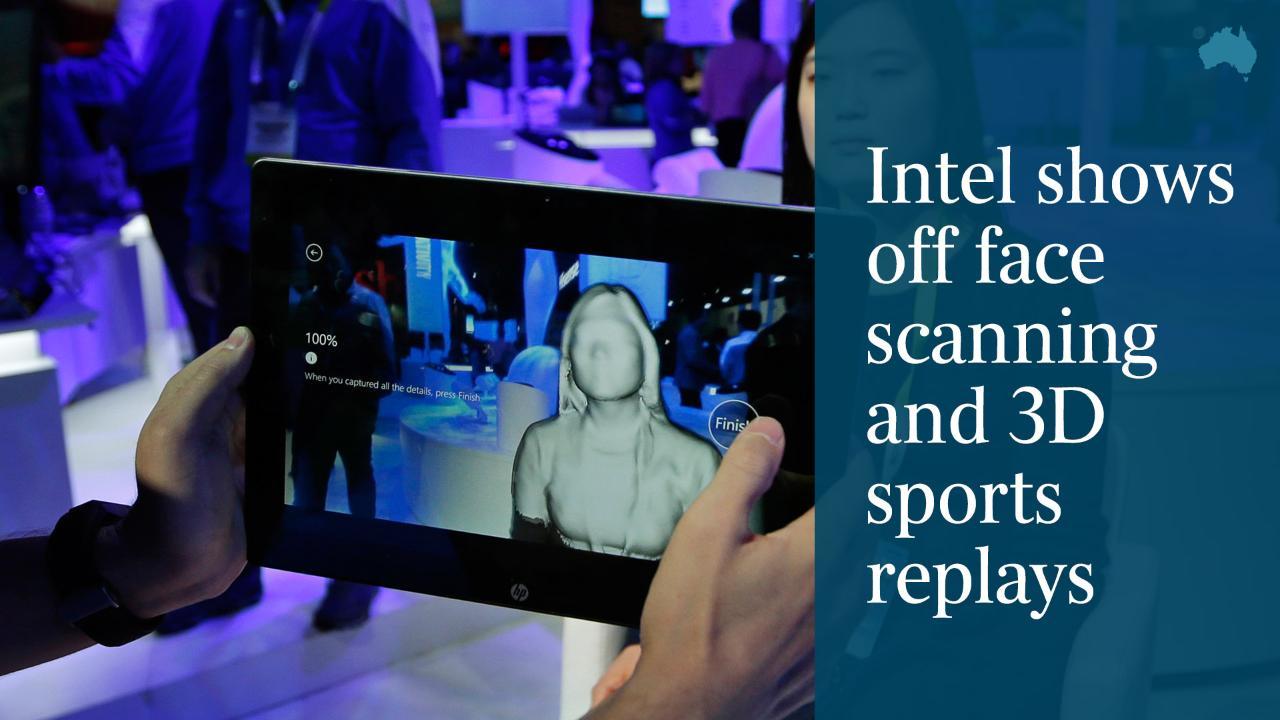Intel and Replay Technologies put sport fans in the 3D director’s chair
Sports fans can now decide not only when to watch a replay, but from which angle. It’s better than being there.

Camera technology coupling 360-degree capability with 3-D is changing the world.
For starters, it’s the basis for the new marvel of virtual reality. You don a headset, look up, down and around, and experience the illusion of being in another world. It could be elsewhere on planet Earth, on a roller-coaster, in the ocean or weirdly immersed inside a cartoon.
But there’s more to 360-degree tech and 3-D than that. In his keynote address at the giant Consumer Electronics Show in Las Vegas, Intel chief executive Brian Krzanich announced a collaboration with Israeli company Replay Technologies that takes the instant replay in sport to another level.
With Replay’s “freeD video”, whether you’re at a stadium or reclining on a lounge at home, you have the power not only to stop the action but go so much further. You can rotate the action, zoom into the scene and view it from any angle, freeze-frame the proceedings, change the perspective to see someone who’s about to score a goal, or examine yourself who snicked a ball to slips.
It’s what the TV stations do, but now you do it prodding, pinching and zooming using a tablet computer at home, or using a Wi-Fi connected device at the stadium.
“It completely changes the experience of what it means to be a spectator,” Krzanich said. “Replay is giving you the ability to change the highlight, and it’s no longer just limited to broadcasters … you will become the director.”
At the CES keynote, Intel demonstrated Replay’s freeD using an NBA clip of a match-up between LeBron James, the world’s sixth most highly paid sportsman last year, and scoring prodigy Kevin Durant. Using a Microsoft Surface Pro 4 and touch gestures, they stopped the action and homed in on James and Durant.
Intel says the technology will work with both replays and streamed live action. You stop the game as you would pause live TV.
Rotating and zooming 360-degree video isn’t rocket science as you can already do that with 360-degree video uploaded to YouTube and Facebook. What is extraordinary is the camera equipment and computer technology that captures the action throughout a game in 360-degree, 3-D.
Peter Kerney, an enterprise solutions architect with Intel Australia, said the filming was done with a large number of 5K cameras positioned all around a stadium. The vision is then fed in real time to a series of Intel Xeon servers.
He said the servers calculated the 3-D positional information from the camera inputs and then sent the data to a spectator’s device, which locally rendered it into 3-D.
Replay says the technology is being used by the Yankees, Dodgers, White Sox, Mavericks, Cavaliers, Cowboys, Ravens, 49ers — to name a few. “The company plans to implement freeD in all venues across the various sports leagues. Look for the capabilities to extend to fans of UFC (martial arts), rugby and other sports.”
Kerney said Intel hoped to sell the technology locally. “We have business development managers talking to various organisations about it,” he said. “But we don’t have any announcements to make on that at this stage.”
Kerney expects the technology to eventually be available on phones. He says users will be able to share streams and create 3-D sporting moments to share with friends.
Before you know it, you could be recreating the scene around a controversial LBW decision or deciding whether the ball did hit the goalpost in an AFL game. Even better, why not give umpires and refs the option to replay action themselves on a smartphone when faced with a difficult decision? And why not let coaches replay action to players while out on the ground?
At CES, Intel also demonstrated how a spectator could become an avatar in a computer game using a device equipped with Intel’s RealSense 3-D camera. In this case the camera was attached to an HP Spectre X2 2-in-1 tablet.
In the demonstration, the camera captured an avatar image of the spectator and a software package called Uranium created a digital avatar. It was inserted into a game as a character. In this case Krzanich appeared in a survival-type suit along with his dog in an apocalyptic wasteland.


